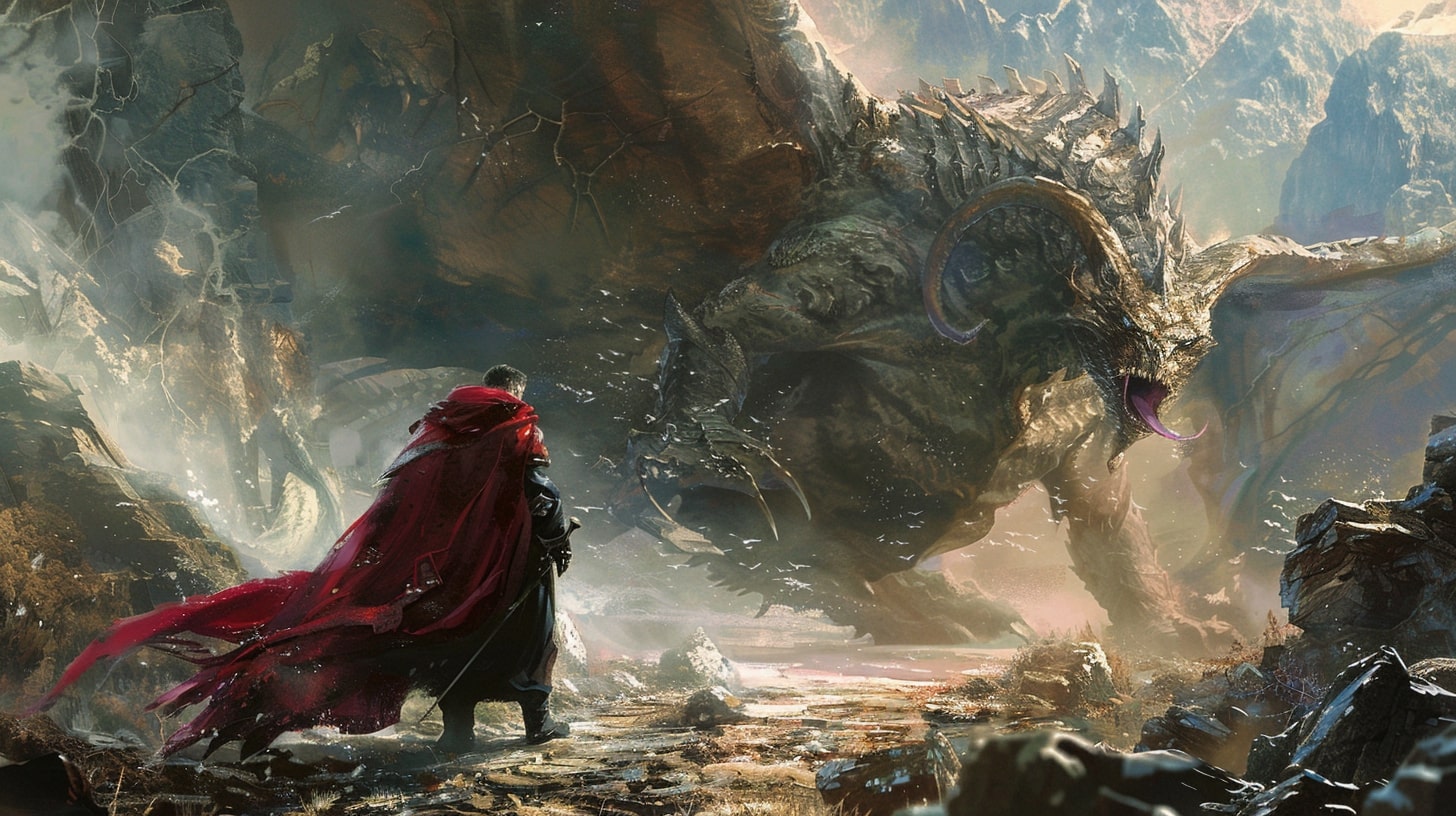Unleash Your Inner Character Creator
Welcome, fellow writer! Are you ready to embark on a journey of writing realistic characters that will captivate your readers? Well, grab your pen and imagination because we’re about to dive into the art of character development!
The Importance of Writing Realistic Characters
Creating realistic characters is like adding spices to your storytelling recipe. Imagine reading a book where the characters feel more like cardboard cutouts than living, breathing beings. Boring, right? That’s why writing realistic characters is crucial for drawing readers into your world and making them care about what happens to your characters.
Realistic characters have the power to evoke emotions, spark empathy, and keep your readers hooked. They become friends, enemies, and everything in between. So, whether you’re writing a gripping thriller or a heartwarming romance, realistic characters are the key ingredient that will make your story come alive.
How to Bring Your Characters to Life
Now that you understand the importance of realistic characters, let’s explore some tips to bring them to life:
Know Your Character Inside and Out: Get to know your character as if they were your best friend. Dive deep into their personality traits, background, and motivations. The more you understand your character’s quirks, fears, and desires, the more authentic they will feel on the page. Check out our article on character personality traits for some inspiration!
Understand Their Motivations and Goals: Every character has their own set of motivations and goals that drive their actions. Whether it’s a burning desire for justice or a quest for personal growth, understanding what makes your character tick will help you create a compelling and believable journey. Need help brainstorming some motivations? Our article on character motivation in writing has got you covered!
With these insights in mind, you’re well on your way to becoming a master character creator. Hold on tight as we delve deeper into the art of building realistic characters, exploring their personalities, crafting compelling backstories, and creating dialogue that rings true. Let’s bring your characters to life in a way that will leave your readers begging for more!

Building a Solid Foundation
To write realistic characters that leap off the page and into your readers’ hearts, you need to lay a strong foundation. You can’t just rely on a few vague notions and half-formed ideas. No, my friend, you must truly know your character inside and out.
Take the time to dive deep into their psyche. Explore their fears, desires, and quirks. Understand what makes them tick and how they react in different situations. The more you know about your character, the more authentic and relatable they will be to your readers. So grab your character development worksheet and get ready to do some serious soul-searching. Need some inspiration? Check out our article on character personality traits for ideas.
But knowing your character’s inner workings is only half the battle. To truly bring them to life, you must also understand their motivations and goals. What drives them? What do they want more than anything in the world? What are they willing to do to achieve their goals?
Motivations and goals are like the fuel that propels your character’s journey. They give them purpose and direction. Whether it’s a quest for revenge, a desire for love, or a thirst for power, understanding your character’s motivations will help you create a more compelling and engaging story. Need some help brainstorming? Check out our article on character goals and objectives for inspiration.
So, my friend, as you embark on your character-building journey, remember this: knowledge is power. The more you know about your character, the more real and vibrant they will become. So dig deep, uncover their secrets, and let their motivations guide their every action. Your readers will thank you for it. Now, go forth and create some unforgettable characters!

Creating Believable Personalities
To truly bring your characters to life, it’s essential to craft believable personalities that resonate with your readers. Real people are complex, and your characters should be no different. In this section, we will explore two key aspects of creating believable personalities: complexity and contradictions and flaws and imperfections.
Complexity and Contradictions
Real people are not one-dimensional, and neither should your characters be. Infuse your characters with complexity by giving them a range of emotions, thoughts, and behaviors. They should have strengths and weaknesses, desires and fears, and a variety of character personality traits. Embrace the messiness of human nature and allow your characters to be contradictory at times.
Consider a character who is typically confident and outgoing but becomes shy and reserved in certain situations. This contradiction adds depth and makes the character feel more realistic. Explore the different facets of your character’s personality and think about how they might respond to various circumstances. This will help you create well-rounded and relatable characters.
Flaws and Imperfections
Perfect characters are boring and unrealistic. Flaws and imperfections make characters more relatable and interesting. These flaws can come in various forms, such as physical, emotional, or psychological. They humanize your characters and create opportunities for growth and development throughout your story.
Perhaps your character has a short temper or is overly critical of themselves. These flaws can lead to conflicts and challenges that drive the plot forward. Embrace the imperfections and use them to shape your character’s journey, allowing them to learn and evolve over time.
Remember, flaws and imperfections don’t have to be negative traits. They can also be quirks or idiosyncrasies that make your characters unique. Maybe your character has an unusual hobby or an endearing habit. These small details add depth and make your characters feel more authentic.
By incorporating complexity, contradictions, flaws, and imperfections into your characters, you’ll create personalities that feel real and resonate with your readers. Embrace the messiness of human nature, and your characters will come alive on the page.

Crafting Compelling Backstories
To truly bring your characters to life, crafting compelling backstories is essential. Backstories provide depth and context to your characters, shaping their beliefs, motivations, and actions. In this section, we will explore two key elements of creating impactful backstories: past experiences and influences and emotional depth and trauma.
Past Experiences and Influences
A character’s past experiences and influences play a significant role in shaping who they are in the present. Delve into their history and consider the events, people, and environments that have shaped their worldview. Did they grow up in a loving family or a tumultuous one? Have they faced significant challenges or enjoyed a relatively privileged life? These factors contribute to their values, beliefs, and attitudes.
Think about how their past has influenced their skills, knowledge, and personality traits. Did they learn a particular skill from a mentor or acquire it through personal experience? Did they have any significant life-changing moments that altered their perspective? By understanding their past, you can create a more realistic and relatable character.
For inspiration and guidance, check out our article on character backstory ideas, which provides a range of prompts and exercises to help you develop rich and engaging backstories.
Emotional Depth and Trauma
Emotional depth and trauma add layers of complexity to your characters, making them more three-dimensional and relatable. Consider the emotional wounds your character carries from their past. These wounds could stem from various sources, such as a tragic event, a broken relationship, or a deep-seated fear. Understanding their emotional baggage will help you create more nuanced and realistic reactions and behaviors.
Remember, trauma affects individuals differently, so consider how it has shaped your character’s personality and coping mechanisms. Some may have become resilient and self-reliant, while others might struggle with trust and vulnerability. Explore the emotional journey your character goes through as they confront and overcome their past traumas.
For further insights and techniques on character development, including emotional depth, you can refer to our article on developing complex characters.
By delving into your characters’ past experiences, influences, and emotional depth, you can create well-rounded and believable individuals that resonate with your readers. Remember to weave these elements into your story organically, allowing your characters’ backstories to shape their present actions and decisions. With well-crafted backstories, your characters will come alive on the page, captivating your readers and immersing them in your fictional world.
Dialogue that Rings True
Developing realistic and engaging dialogue is crucial for bringing your characters to life. It’s through their conversations that readers can truly get a sense of who they are. In this section, we will explore two important aspects of writing dialogue: finding their unique voice and crafting conversations that reflect personality.
Finding Their Unique Voice
Each character should have a distinctive voice that sets them apart from others. This voice encompasses their speech patterns, vocabulary, and overall tone. To find their unique voice, consider the following:
- Personality Traits: Take into account your character’s traits and quirks. Are they sarcastic, witty, or serious? Incorporate these traits into their dialogue to make it more authentic. Our article on character personality traits can help you explore various traits and their impact on dialogue.
- Background and Culture: Consider your character’s background, upbringing, and cultural influences. These factors can shape their speech patterns, idioms, and use of language. Researching different cultures and dialects can add depth to your character’s voice.
- Dialogue Tags: Use dialogue tags to attribute speech to specific characters. These tags can reflect their unique voice. For example, a character who is shy might speak softly, while a confident character might have a commanding tone. Be creative with your tags to enhance the character’s voice.
Conversations that Reflect Personality
In addition to finding their unique voice, it’s important to craft conversations that reflect each character’s personality. Here are some tips to achieve this:
- Different Speech Patterns: Vary the speech patterns of your characters. Some may be more formal, while others might be more casual or even use slang. This adds authenticity and helps to differentiate their dialogue.
- Reactions and Responses: Consider how each character reacts and responds to different situations. Are they sarcastic, empathetic, or confrontational? Tailor their dialogue accordingly to maintain consistency and reinforce their personality traits.
- Conflict and Tension: Introduce conflicts and disagreements between characters to create tension in conversations. This allows for dynamic and engaging dialogue that reveals more about their personalities and relationships.
By focusing on finding their unique voice and crafting conversations that reflect personality, you can create dialogue that feels genuine and compelling. Remember to stay true to each character’s individuality and use dialogue as a tool to deepen their development. For more tips on character development, check out our article on character development in worldbuilding.
Putting It All Together
Now that you have a solid understanding of writing realistic characters, it’s time to put all the pieces together and create characters that truly come to life on the page. Balancing realism and fictional elements is key to crafting characters that are relatable, engaging, and memorable. Additionally, evolving and developing your characters throughout your story will ensure that they grow and change in meaningful ways. Let’s dive in!
Balancing Realism and Fictional Elements
When creating characters, it’s important to strike a balance between realism and fictional elements. While it’s tempting to make your characters larger than life, remember that readers connect with characters who feel authentic and relatable. Incorporating realistic traits, flaws, and motivations will make your characters more believable and resonate with your audience.
To achieve this balance, consider the following:
Character Personality Traits: Develop a diverse range of personality traits for your characters. Refer to our article on character personality traits for ideas and inspiration.
Character Backstory: Craft a well-rounded backstory that explains your character’s past experiences, influences, and emotional depth. Check out our article on character backstory ideas for guidance.
Character Dialogue and Voice: Ensure that your characters have distinct voices and speak in a manner that reflects their personalities. For tips on writing authentic dialogue, visit our article on character dialogue and voice.
Remember, while realism is important, don’t be afraid to inject some fictional elements that add intrigue and excitement to your characters. Just be mindful of maintaining consistency and believability within the world you’ve created.
Evolving and Developing Your Characters
Characters shouldn’t remain static throughout your story. They should undergo growth, transformation, and development. This evolution adds depth and complexity to your characters, making them more compelling and engaging. Here are some ways to evolve and develop your characters:
Character Arc: Plan a character arc for each of your main characters. This arc represents their journey, including the challenges they face, the lessons they learn, and the changes they undergo. For more information on crafting a character arc, explore our article on character arc in storytelling.
Character Relationships and Dynamics: Explore the relationships between your characters and how they influence one another. Develop dynamics, conflicts, and resolutions to create compelling interactions. Our article on character relationships and dynamics can provide further insights.
Character Growth and Transformation: Allow your characters to grow and transform over time. This can be through overcoming challenges, learning from their mistakes, or discovering new aspects of themselves. Visit our article on character growth and transformation for techniques and ideas.
By evolving and developing your characters, you breathe life into them, making them more relatable and engaging for your readers.
As you embark on your character creation journey, remember that writing realistic characters is an art. It requires a deep understanding of human nature, empathy, and an ability to balance realism with fictional elements. Continuously refine your characters, explore their complexities, and let them guide your story. Happy writing!





























